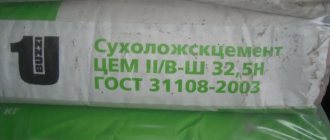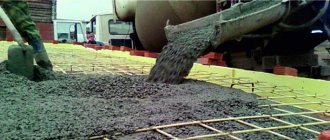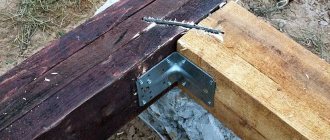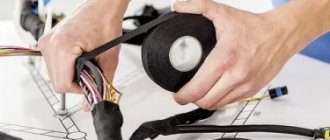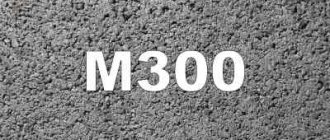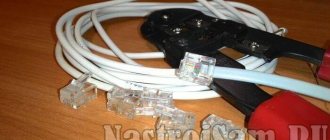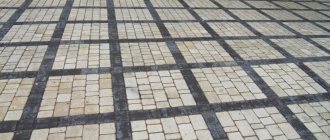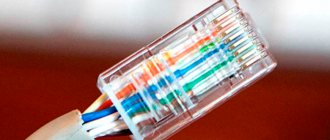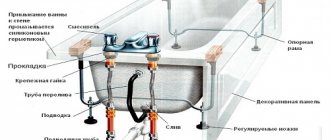It is difficult to imagine a more common building material than concrete. In urban environments, it surrounds us everywhere. Cladding walls, protecting stairs from ice - there are many situations when a special adhesive suitable for working with concrete is needed. Today, manufacturers present a wide range of materials. It will not be superfluous to understand their types and properties.
Types of compositions
The entire variety of concrete adhesives is divided into two large categories depending on the type of surfaces being bonded:
- Compositions whose use is effective when working with similar building materials, for example, glass, rubber. This group also includes adhesive for cellular concrete and other block building materials. At the same time, the consumption of the product is more economical than when using ordinary cement mortar.
- Mixtures capable of joining different types of building materials, for example, concrete surfaces with rubber or metals.
If we consider the composition of adhesive materials for concrete, most of them are based on cement. The best samples are based on its white version and contain additional components to increase adhesion, accelerate hardening, etc. Non-cementitious adhesives include, for example, epoxy adhesives, but they also necessarily contain a mineral filler.
Also, materials differ in terms of further use. There is a group of products with increased resistance to extreme temperatures or excess humidity. They are indispensable for finishing swimming pools, fireplaces, baths, and installing heated floors.
Such adhesive compositions allow high-quality work on non-ideal surfaces and eliminate potholes and cracks.
For the steps of access stairs, which become a real skating rink in winter, brands intended for rubber and concrete are suitable. At extremely low temperatures, such products do not lose their properties. An example is Ceresit adhesives.
Types of adhesives
Combined solutions are capable of bonding two different surfaces:
- Expanded polystyrene or polystyrene foam.
- Rubber surfaces and concrete.
- Concrete structures with metal products.
Epoxy adhesive
It is capable of creating a thin coating on the concrete surface and promotes good adhesion.
Epoxy adhesive can also be used to join tiles. But after processing, the seams need to be rubbed down.
Furyl glue
Furyl adhesives contain resins of the same name, which can instantly harden under the influence of heat.
The advantages of such compositions include:
- Maximum fixation strength.
- Resistant to moisture.
- Resistance to chemical reagents.
- Protection against corrosive processes.
Adhesive mixtures for blocks
In the construction industry, the technology of arranging walls from blocks is especially popular. Such designs are characterized by low weight and ease of processing.
Kawabanga! Mixtures for concrete repair
And in order to build an integral structure on their basis, the following types of adhesive mixtures should be used:
- For expanded clay concrete blocks.
- For gas silicate blocks.
- For foam concrete blocks.
Some builders prefer the classic version of connecting blocks - laying them on a mortar of cement and sand.
Adhesives that work in extreme conditions
A separate category includes adhesive mixtures that are subject to intense overload due to temperature fluctuations or high humidity.
They are in demand when finishing the following structures:
- Swimming pools and hydraulic structures on the site.
- Fireplaces inside the house.
- Warm floor design.
- Public baths and saunas.
In addition to the listed objects, specialized adhesives may be required when carrying out work on the steps of access stairs, which are covered with a layer of ice during the cold season.
Among the large range of adhesives for extreme conditions, the Ceresit mixture is especially popular.
The advantages of Ceresit products include improved adhesive properties and low cost.
Polymer analogues
The curing time is determined by the specific composition and environmental conditions in which construction work is carried out. At favorable temperatures, this process takes a couple of hours.
This polymer analogue is characterized by increased resistance to chemicals, oils and water. It also meets all environmental standards and demonstrates increased adhesive strength.
Characteristics that a quality composition must have
In accordance with European quality standards, a reliable product must have the following properties:
- Maintains characteristics for 1-4 hours.
- The standard mixture should not be covered with a film for 20 minutes, quick-drying - 10 minutes.
- The permissible maximum surface slip after applying glue is half a millimeter; ideally, there should be no slip at all.
In order for buyers to be able to choose the most suitable composition for use in specific conditions and for a specific purpose, manufacturers mark their products with codes:
- G—liquid mixture;
- T - without creeping effect;
- F - fast-hardening agent;
- E - allowed to be kept open;
- C2S - resistant to deformation;
- C2 - composition with improved characteristics;
- C1 is a regular mixture.
Properties of quality material
According to European standards, the following properties of a reliable composition are distinguished:
- the composition should retain its qualities from one to four hours;
- the standard composition is not covered with a film within twenty minutes, quick-drying - within ten;
- the surface after applying the composition should not slip (maximum - half a millimeter of slip).
When purchasing, pay attention to the codes printed on the packaging:
- C1 (regular remedy);
- C2 (improved remedy);
- C2S (can withstand deformation);
- E (can be kept open);
- F (hardens quickly);
- T (no creeping effect);
- G (liquid).
Return to contents
The best brands
The construction market offers products from many domestic and foreign manufacturers. According to reviews, concrete adhesive, which is considered one of the best, is produced by Ceresit.
Domestic brands are no less popular:
- "Leader";
- "Polymen";
- "Polyrem."
Demanded products from foreign manufacturers:
- Bostik;
- Findley;
- seder;
- Emfi;
- Knauf;
- Jovi.
Advice! The leading position as a mixture used for cellular concrete is occupied by the Monolith brand.
Ceresit
High efficiency of glue application is achieved by adding a special plasticizer. The products of this brand are characterized by improved adhesive properties, minimal slipping of cladding elements and an affordable price. The glue is based on white cement.
"Ceresit 115" is recommended by the manufacturer for use at the following sites:
- old cladding;
- screeds outside the house with heating;
- outdoor swimming pools;
- roofs;
- floor on the balcony or terrace;
- stairs outside buildings.
Epoxy adhesive
In the vast expanses of the former USSR, epoxy compounds have gained the greatest popularity. This is due to the fact that they are effective when working with almost any materials:
- metal;
- porcelain;
- stone;
- glass;
- tiles.
The epoxy resin-based composition is a waterproof, environmentally friendly mixture consisting of two components, which forms a thin layer on concrete, perfectly seals cracks and levels the surface. The action is based on adhesion, examples are “EDP”, “Claypole”, “Epoclay”.
Scope of application of epoxy adhesive:
- production of cement screed;
- durable bonding of building materials surfaces;
- waterproofing between blocks;
- restoration of worn surfaces;
- fixation of reinforcement anchor rods in concrete structures;
- in rooms with high humidity - providing protection against the appearance of fungus.
Epoxy compounds are usually sold in metal packaging. Available in the form of putty paste or flowing, viscous mixtures.
Two-component products consist of a resin (the main adhesive) and a hardener. When they are mixed, a polymerization reaction is triggered, resulting in an exceptionally strong seam. Hardening occurs within several hours and depends on the characteristics of the specific composition, as well as air temperature.
The connection is very resistant to oils and solvents, and allows for high-quality and durable gluing of wood to concrete, metal, and stone.
Epoxy glue-adhesive for concrete
Epoxy glue application
Designations according to classification
Epoxy glue application
Mapei eporip mixture consumption
1. Epoxy resin ED-20 in an amount of -100 (parts by weight).
2. Plasticizer in the form of SKN-10 rubber in an amount of 10 (parts by weight).
3. Solvent R-4 in an amount of 10 (parts by weight).
4.Hardener Polyamine AF-2 in the amount of 6 (parts by weight).
1.Epoxy resin ED-20 in an amount of 100 parts by weight.
2. Solvent R-4, in an amount of 10 parts by weight.
Types of compositions and the advisability of their use
3. Hardener Polyethylene in an amount of 12 parts by weight.
4. Surfactant (surfactant), grade OP-7, in an amount of 2 parts by weight.
Concrete is an irreplaceable material. To work with it, it is necessary to use high-quality equipment, adherence to working technologies, use of qualified labor and, of course, the selection of reliable and modern adhesive mixtures.
Step 1: Two basic steps for concreting
There are different adhesives on the market today for working with concrete. All of them are ready-made mixtures, which include additives, fillers, and cement itself.
Kawabanga! How to choose insulation for a concrete floor under linoleum and install it in one day
Useful tips
Advice from professionals will allow you to complete the work with the highest quality possible, while ensuring a strong, durable and reliable connection of building materials:
- Pour the dry mixture into the water, not the other way around.
- Adhesives are characterized by rapid setting, so do not prepare too much of the solution at once.
- Clean the surface of dust and dirt before applying the mixture.
- When using ordinary cement mortar, add PVA glue to it, this will significantly increase the adhesive properties of the mixture, its ductility and make the connection stronger.
- Do not skimp when choosing the composition, since it determines how durable and strong the structure will be.
What kind of PVA glue can be added to cement mortar?
You need to choose the right adhesive. This improves the quality of concrete.
If you plan to mix cement and PVA glue, you should consider only 1 option - the universal one with the designation MB. The substance has a homogeneous structure, is characterized by a yellowish tint and moderate viscosity. It is used to prepare any water-based composition. For example, PVA is added to concrete, putty, and primer.
It is not advisable to purchase the substance in small quantities. This will increase costs because a lot of adhesive needs to be prepared. If you plan to add PVA glue to the cement mortar, you should pay attention to large containers.
So, 1 kg of the mixture costs 80 rubles. You can purchase the material in plastic containers. It is convenient to work with him. If the substance is not completely used up, the container is closed with a lid until the next opportunity when the material may be useful.
Adding glue correctly - step-by-step instructions
Before connecting the components, you need to find out how much adhesive mixture is needed. It is difficult to determine the exact quantity. The calculation is made approximate, taking into account proportions. It must be remembered that PVA is susceptible to ultraviolet radiation.
At the same time, it begins to lose properties. However, immediately after connection with the cement-sand mortar, the characteristics of the adhesive change. At the same time, the composition becomes resistant to ultraviolet radiation.
The upper limit of the permissible volume of adhesive mixture in concrete is 20%. The ratio of components (glue, cement) is 1:5. These proportions are recommended to be used for preparing tile adhesive. To make a cement screed, a material is created in which the proportion of PVA is 5-12%.
If you plan to prepare a cement-based plaster composition, you should follow the instructions:
- Take M400 cement and add sand to it. The recommended ratio of components is 1:3.
- The mixture is diluted with water until a creamy consistency is obtained.
- Add glue. For 10 liters of cement mixture, use no more than 70 g of PVA.
The adhesive composition is characterized by a fairly viscous consistency. When added to a cement mixture, it will be difficult to mix. For this reason, you need to first add a little water to the adhesive. It is necessary to obtain milk of low viscosity.
When it is necessary to prepare a cement mortar, other proportions are used: 10 liters of concrete mixture and 200 g of plasticizer (in the form of an adhesive). Thanks to the latter, increased resistance of the components to moisture is ensured. As a result, it becomes possible to use concrete in rooms with higher humidity levels.
Can I use a different glue?
It is acceptable to consider products from different brands:
These are specialized polymer-based additives. The first option is made of latex. This additive is used to prepare tile adhesive. Before use, the material is diluted with water (1:1). The properties of this variety are identical to PVA.

